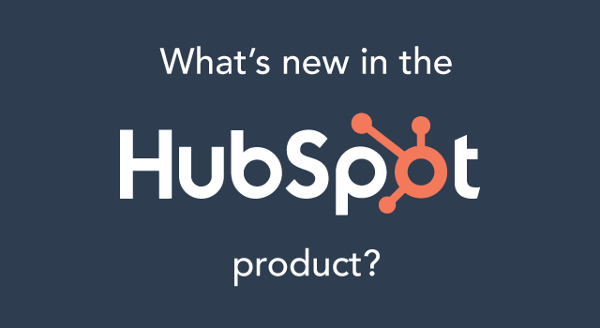Primitive humans told stories by the roar of fire pits, bringing together people and communities. Businesses can use technology to achieve the same on a global scale.

The exact origin of speech is unclear. What we do know is that somewhere between 2 million and 50,000 years ago, early humans uttered their first words into the primordial gloom. We haven’t shut up since.
Mass globalization and the technology accelerating it have breathed new relevance into storytelling, enabling us to build bridges and form business relationships with customers and suppliers around the world. Business storytelling of this kind is neither new nor revolutionary. However, much of the current rhetoric surrounding brand storytelling focuses either on the applications of storytelling in business, the science behind it, or the practical aspect of incorporating a narrative into content.
Less discussed is how individual narratives fit into the larger brand story and how sales and marketing technology is enabling companies to communicate this across all operations.
In this first article of the brand storytelling series, let’s look at how you can achieve this to tell a series of stories, the sum of which more honestly, consistently, and impactfully communicates the bigger picture that’s your brand story to your readers, prospects, and customers.
Building a Brand Story, One Narrative at a Time
For the last four years, I’ve been writing a thesis on the limitations of language and how to overcome them to better communicate meaning through fiction. There are some things the writer simply cannot communicate explicitly through words on a page. But by telling a series of short stories, for example, they can imply meaning through the suggestion of narratives within narratives, stories in the spaces between stories, and the inference of a larger, overarching narrative.
Could businesses with mature content strategies achieve the same?
Told in isolation, a good story is capable of influencing the reader or listener. It’s for this reason, as well as those recounted above, that stories have a place in all forms of marketing and advertorial. But the storytelling tradition was not founded on the back of disparate tales — quite the opposite. Through the telling of extended narratives across multiple stories, early humans created sprawling mythologies to better make sense of their environment.
In the process, they not only brought communities together but shaped the very way they think. By telling the right stories using the right channels and platforms, businesses can use their brand narrative to inspire similar levels of loyalty and belief in their customer base.
How to Tell Your Brand Story Across Multiple Narratives
To find the right stories, begin by breaking down your brand into its constituent parts. What’s the unique value proposition at the core of your business, and what are the messages that support it?
BabelQuest was born out of our co-founders Becky and Eric’s frustration at the lack of clear communication in the corporate IT world, particularly across the sales and marketing functions.
Today we offer a familiar slew of sales and marketing services, but it was this frustration that shaped our company values and our focus on helping our clients start meaningful conversations with their prospects. Passion, transparency, open-mindedness, curiosity, and accountability run like a plot thread through everything we do, from the way we hire and how we conduct ourselves in meetings to, yes, the content we write and the stories we tell.
So the right stories are those that align with your values while genuinely serving the reader. Sometimes, as with 31 Questions to Ask Yourself Before Hiring an Inbound Marketing Agency, this is explicit. The article in question is a direct shoutout to being inquisitive, communicating the importance of the value to us as well as its benefit to the reader. "Questions open our eyes to who we are and where we want to be, and that’s incredibly valuable — especially when what you’re looking at is your company’s future."
In How to Roll Out a CRM Across Your Business (And Make Sure Sales Is On Board With It), we’re transparent with the reader about the challenges of rolling out a new CRM. Yes, we can set you up with HubSpot’s awesome sales technology, but there’s more to fixing your sales process than a new piece of software. We’d be remiss if we didn’t tell a story highlighting the challenges to come — and help the reader overcome them.
I’m drafting another article on business storytelling as we speak. If my continued writing in this area doesn’t communicate the inextinguishable passion I feel for this subject, I don’t know what does.
The point being, every one of these articles is written to help the casual reader, to foster meaningful conversations, and to tell a story of its own. But for the repeat reader visiting the blog every week, an overarching narrative should begin to emerge, one that paints a picture of who we are, how we help, and why we care in a way that no single article could.
The examples above come from the BabelQuest blog, but that’s only one part of the picture. As Microsoft recently wrote in The Little Book of Storytelling, "Good stories are particular about platform. Consider how and when the story will appear. How you show up is part of the story, too."
In line with HubSpot’s newly realized flywheel approach, this means extending your brand story across sales, marketing, and customer service.
Extending the Narrative Across Sales, Marketing, and Customer Service
Picture this.
I was sitting across from Becky in a modestly sized meeting room, where my second interview for a content manager role was underway. Suddenly, I hear this:
Your task is to create a content plan for a multinational logistics company with £900 million turnover. They have no digital presence, no predefined value proposition, no existing voice, and no clear idea of their target customer.
I hadn’t been warned that there was going to be a practical or that I was going to be tested in any way beyond the anticipated interview questions. You have 10 minutes. Go.
As Becky left the room, a series of thoughts passed through my mind. The hypothetical conditions she had outlined were restrictive to say the least, but they did highlight one approach that I knew I could work with. A company of that size and turnover had a story. What could this look like when told using the HubSpot Growth Platform?
Using Marketing Hub to Tell Stories That Attract Your Ideal Audience
You already know how easy it is to build and modify your website using HubSpot Marketing Hub, enabling you to incorporate stories into existing web pages or work from blog post templates with equal ease. HubSpot’s responsive templates are a real asset here, ensuring that your stories are optimized for reading no matter which device your user is choosing to use at any given time.
With the content strategy tool, you can organize your stories into relevant topics, giving clarity to the pitching and strategy process and helping you to structure your titles around the core values running throughout your stories. (Check out HubSpot’s post on topic clusters.)
The ability to personalize messaging based on location, traffic source, device, persona, and more means you can design calls-to-action that really speak to your reader. For helpful, awareness-level stories, consider calls-to-action that encourage the reader to subscribe, so you can be sure they’re notified every time you publish a new article. This is an effective way to optimize your content strategy for the telling of an extended narrative over multiple posts.
Automated workflows are another way that the platform is set up to achieve this. Creating an email workflow that quite literally delivers successive "chapters" or stories is a functional way of delivering an extended narrative straight to your readers’ inboxes.
Using Sales Hub to Engage the Reader and Grow Relationships
When most of us think of storytelling, we often think of marketing and advertising opportunities. But Hubspot Sales Hub is also equipped with a host of features that can be used to tell interesting and engaging stories.
Turn the stories that the sales team finds itself emailing over and over into email templates, so even your new starters can jump straight into the business of nurturing and closing leads using your most powerful or affecting stories.
Use the email tracking feature to give yourself complete visibility over which stories are performing well and to discover who’s reading them.
HubSpot’s live chat is presenting exciting opportunities for businesses to add an interactive element to their storytelling, inviting visitors, prospects, or customers to quite literally join the conversation. Could a short story or anecdote told over chat provide the context a site visitor is missing, or offer a hook that leads the prospect to read the rest of the story on the blog?
Delighting Your Existing Customers Through Service Hub
"The suite is complete," writes HubSpot on the new Service Hub offering. "Service Hub is built for service teams but because it’s united with the Marketing and Sales Hubs, all of your front office teams — marketing, sales, and service — can now share a single view of the customer, and unite the customer experience."
Powerful stuff.
Could the reverse not also be true? By uniting Sales Hub, Marketing Hub, and Service Hub under an extended narrative — your brand narrative — are you not also giving your customer a single, more holistic and affecting view of your brand story?
Service Hub is still new to me. But you had better believe your customers want to feel like they’re a part of a great brand story once they’ve invested their time, budget, and reputation into your business. Whether you incorporate them into your content explicitly via case stories and testimonials or work quietly to make sure you’re available to continue the conversation whenever they need to (e.g., customer support and 24/7 communication channels), it’s crucial that you make them feel like a main character.
Measuring Storytelling Across a Fully Aligned Sales, Marketing, and Service Delivery Process
Stories are not innately measurable, but when you tell them over platforms synced with HubSpot’s integrated analytics software, they become trackable. Your story itself remains intangible, but through performance metrics made visible by a fully aligned sales and marketing process, you can feel its heat, taste its smoke, and know that it has made an impression with a reader.
Deliver a series of pre-planned stories over a six-month period, and observe the impact of an extended narrative on customer engagement and business growth.
I said as much to Becky when she returned to the interview room 10 minutes later. The hypothetical scenario turned out to be a real prospect with real challenges that she wanted to help them address. Nobody cares about brands, but many people care deeply about doing their job well. In the logistics space, this means working with supply chain partners with forward-thinking values capable of future-proofing an industry currently being reshaped by emerging technology and rising customer expectations. This was their heritage; this was the overarching narrative we needed to communicate.
At least, that’s what we figured. I got the job. They were my first client. One year later, we’re still telling their stories.
As digital has become more competitive and markets have become almost universally saturated with all forms of content, the pressure is on for companies to find innovative ways of cutting through the noise and starting conversations with their most valuable prospects. Advances in sales, marketing, and service technology present today’s business owners with exciting platforms through which to tell their stories, but it’s the storytelling tradition that still shines with the brightness of those first fire pits and the communities gathered around them.










